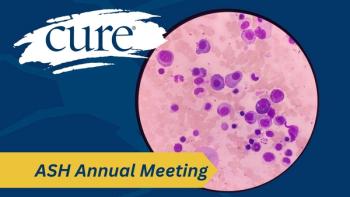
Satisfaction With Physician Communication Can Lead to Better Patient Outcomes
In a recent study, researchers from the American Cancer Society found that patients who reported higher satisfaction with their physician’s communication also had better health outcomes at lower costs.
The anxiety that can accompany a cancer diagnosis can be overwhelming — and a feeling that can linger throughout the continuum of care. Therefore, patient satisfaction with health care provider communication is important, especially in survivorship.
A new study, published in the Journal of the National Comprehensive Cancer Network, found that patients who reported greater satisfaction in the way their provider communicated with them ended up receiving more efficient care with fewer office visits and better health outcomes.
“Satisfaction with provider communication not only leads to better clinical outcomes, but also, it offers these improvements in a more efficient manner,” Ashish Rai, Ph.D., from the Surveillance and Health Services Research Program in the Department of Intramural Research at the
While an interest to improve patient-provider communication exists, experience-based research on patients’ determinants of satisfaction with provider communication and their ensuing outcomes is sparse.
“Patient-provider communication is an important component of health care quality,” he added. “Communication being a very broad and multidimensional concept, more scientific research is required to define and validate populational measures of effective patient-provider communication and link them with downstream outcomes.”
Therefore, Rai and colleagues analyzed the Longitudinal Medical Expenditure Panel Survey data from 2008 to 2014 to identify factors associated with cancer survivors’ satisfaction with health care provider communication. Patients used a four-point scale — ranging from “never” to “always” to track whether their providers listened carefully, explained things in a way that was easy to understand, showed respect for what the respondent had to say and spent enough time with the respondent.
In addition, they evaluated the associations between different levels of satisfaction and short-term outcomes, including health status, health care utilization and expenditures including medication and out-of-pocket costs.
The researchers identified 4,588 respondents diagnosed with cancer from the survey data — of which 2,257 were nonelderly (aged 18 to 64 years; average age, 54 years) and 2,331 were elderly patients (aged 65 years or older; average age, 75).
In both groups, higher satisfaction was associated with fewer comorbidities, suggesting that more complex circumstances negatively impacted patients’ perception of their communication, Rai said.
“Many clinically complex survivors may not have sufficient understanding of their condition, or they may feel overwhelmed by the barrage of information coming from various sources, and it may also be challenging for the providers to convey a great volume of information to these complex cancer survivors given the time constraints of the interaction,” he added.
Higher satisfaction also was associated with fewer office visits in the first year after diagnosis and absence of emergency department visits in that same year. In addition, higher satisfaction in the first year was associated with better mental and general health during the second year following a cancer diagnosis among the elderly population.
Lastly, greater satisfaction was associated with fewer office visits in the second year following a cancer diagnosis in the non-elderly respondents; whereas, elderly patients who reported greater satisfaction were more likely to have lower health care expenditures in the second year.
“There are many positive impacts that have been reported from quality communication, including enabling treatment adherence, medication compliance, and patient’s self-care,” Rai said. “Our results also highlight that among cancer survivors, effective communication strategy led to more efficient use of health care services.”





